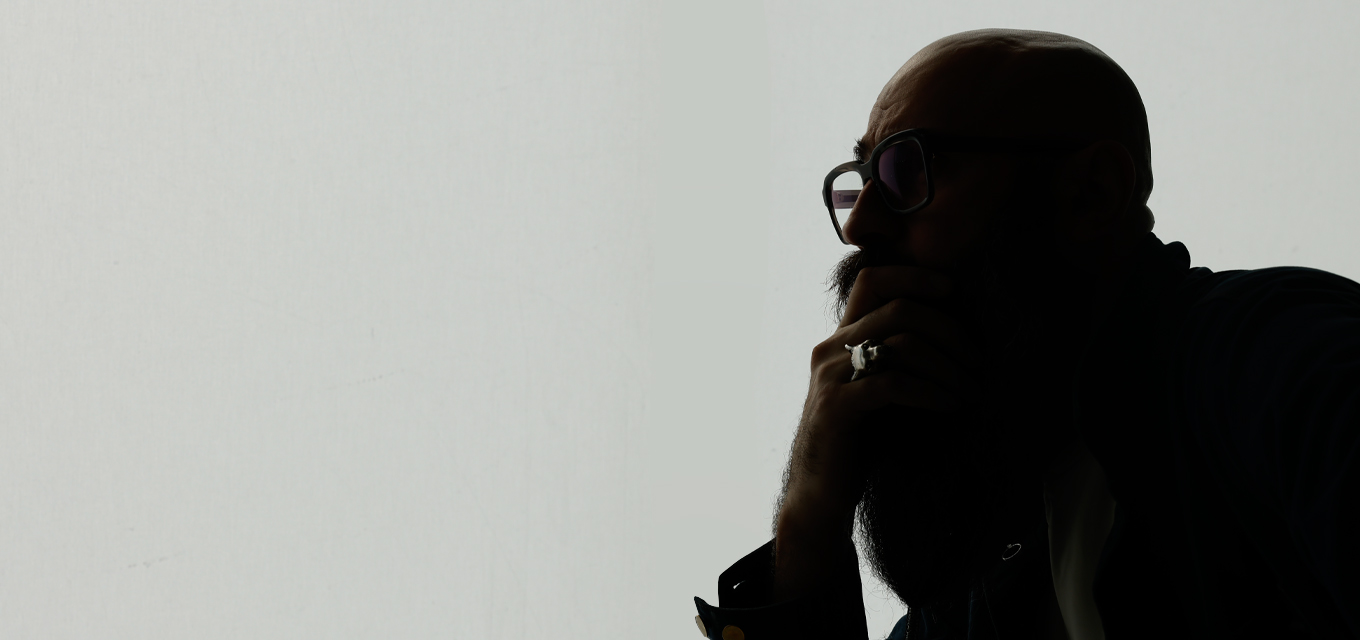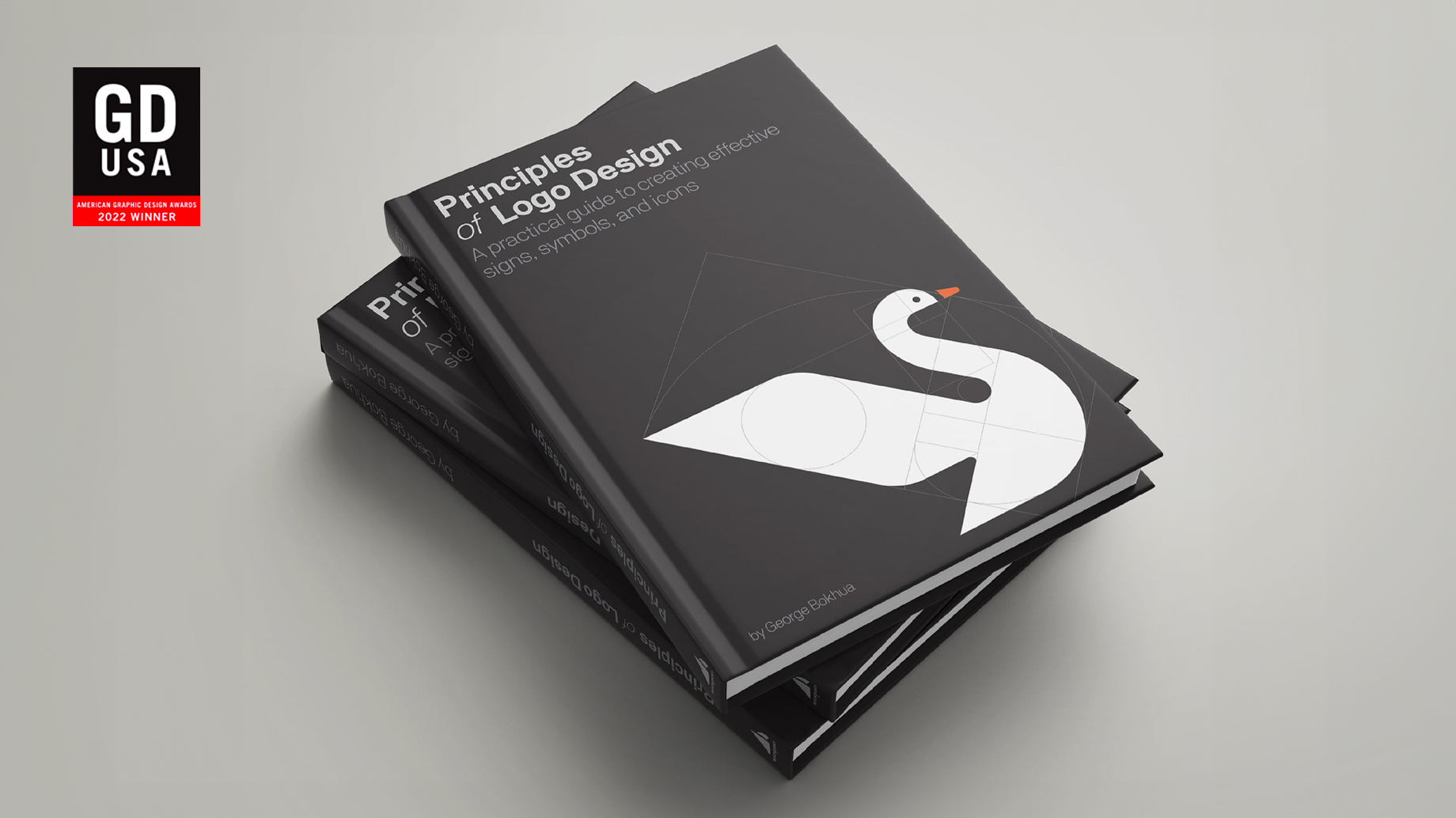Knowing how to craft a successful logo design is a crucial skill for any graphic designer. In his book, Principles of Logo Design, George Bokhua shares his own experiences with aspiring designers and many more, guiding through the essential thought-starting process.
Explore our interview with George Bokhua, the acclaimed logo designer who received the American Graphic Design Award in 2022 for his outstanding book.
Everyone is excited about the result, but what is the process you go through when creating a logo?
With experience, this process becomes systematic. Upon receiving the brief, I ask the client numerous questions to grasp the brand's character. Frequently, my decision on which project to undertake is based on the insights gained from these questions. The process involves product research and progresses through several stages before reaching the sketch phase. I then refine the best versions on the computer and prepare a presentation for the customer. This presentation includes mockups and, in some cases, animated versions of the logo. The entire process typically spans 2-3 weeks. Following feedback, the concept undergoes two stages of finalization before the logo is ready to be launched into the real world.
Designers often note that they face challenges while collaborating with clients on logo projects. How do you manage to ensure the best results?
When working on an innovative project, the client needs confidence and assurance from the designer that the chosen approach will be successful. If I'm uncertain about the concept, the client is likely to pick up on it as well. Creating an original shape or expression in logo design, or implementing a novel approach, can make it challenging for the client to take the risk of entering the market with a completely different visual identity. Clients often prefer to communicate with the public using the established visual language in the market. During logo redesigns, the designer faces limitations on the freedom of shapes, as they must maintain a certain relationship with the initial version. This constraint often complicates the process. In contrast, startups tend to be more daring and adventurous in this regard.
Today, your expertise is unquestionable. What was this stage like at the outset of your career? How did you manage to convey your position to the clients and convince them?
I consider myself fortunate to have begun working on logos at the right time. In the early 2000s, there was a shift from manual work to computerization, which meant that there was significant freedom in logo design. Individuals with access to computers could try their hand at creating logos, resulting in a substantial variety in the market. Many inexperienced designers neglected the simplicity and standards perfected by modernists over decades. This meant that logo became separated from the foundation of design. I started my journey with some education, and by the time I entered the market, I was already familiar with various works. I had an understanding of what worked and why. During my work process, I reintroduced paper and pencil, a practice not widely adopted at that time. This decision helped me make progress with developing my own style, which is a continuation of the modernist approach.
You transfered your experience into a book that finds recognition and approval throughout the world. What are some personal insights that you share in the book to assist other designers?
There are only a few books in logo design that provide basic knowledge. Teaching all the details from a book is challenging. So, I decided to use this book to enhance self-awareness for designers and help shape general ideas during their work. The book offers them a key, an idea, and inspiration that they must develop and incorporate into the work process.
What defines the working style of a designer? In your environment, discipline and adherence to rules are well-established. Where is the limit that a creative and disciplined designer can reach?
Graphic design requires a certain order and organization. This process finds itself somewhere between science and art. In my case, if this balance is not maintained, I cannot work. Unlike in life, in this field, you have the opportunity to approach perfection and have everything arranged meticulously.
Let's delve a bit deeper into your book: what was the main discovery during the process of working on it?
When you're in the process of your work, it's often challenging to articulate techniques and methodologies. Working on the book required me to conceptualize these aspects and transform them into ideas. Even though I didn't delve deeply into many areas, my future book will provide more detailed descriptions of working approaches.
Before I inquire about your future book, what were the main aspects you focused on in your first book?
The structure of the book offers a general overview of logos. You won't find specific working formulas in this book. Instead, designers will discover ideas that help thoughtful reflection. If they are working on improving, these ideas can assist in creating more sophisticated and attractive logos. The book serves more as a source of inspiration than a collection of ready-made answers.
In your case, what serves as the source of inspiration? Are there specific books you read upon during your work?
Books have been my primary source of inspiration from the beginning. However, before diving into the work process, I intentionally avoid looking at anything that might influence the solution of the brief through others' work. Generally, I am keen on books—they are like fresh air for me and have a calming effect. Nevertheless, this can also have a negative impact. The primary goal of a logo is to be simple and effective in influencing the brain. Information oriented towards this result can infiltrate the designer's mind in various ways, but often the source of inspiration is forgotten. During the creative process, a designer might think as if it's their own idea. Therefore, I don't recommend drawing inspiration from others' works before starting a project. In general, if a person is healthy and brimming with optimism, that alone can be enough inspiration for their work.
You have got decades of experience in logo design, working with renowned brands such as Disney, New Balance, and Weird Magazine. You are also a recipient of the 2022 American Graphic Design Award for Book Design from Graphic Design USA and the Red Dot Award. What are you currently working on?
Drawing from the experience gained in making the first book, I now pay closer attention to what, how, and why I do in the work process. I'm striving to formulate more sophisticated ideas. While my first book caters to beginner, aspiring designers, my focus now is to share my knowledge and experience in greater depth.
Moving on to another topic, what are your thoughts on the purpose and role of the Design Institute, and why do you believe having this direction is essential in Georgia? (Given that you'll be a member of the advisory board...)
I am content with the progress we have made in the creative field, and I trust the institute's team to do their job well. However, I observe a disparity in the attitude of Georgian students compared to their international counterparts. Unlike some international students who are willing to forsake childhood hobbies and pastimes, viewing design as their primary passion, I sense a different approach among Georgian students. I have a sense of half-optimism mixed with skepticism. We need the right dynamic between a lecturer and a student so that when passing the torch, the student should not get burned.
Finally, with your expertise in online sharing and teaching tools, thousands of designers worldwide benefit from your knowledge to start learning design with you. Where should a creative person begin their journey in learning design?
It's a great question. In my case, I was fortunate to know at an early age what I wanted to do. For students, the first step is to familiarize themselves with the visual languages of past masters. Knowledge gained solely from contemporary designers is not enough; they must also comprehend architecture and painting. Familiarity with their approaches and styles is essential. However, this knowledge should serve as a foundation for independent thinking, encouraging individuals to create something unique rather than replicating existing designs.
Interview by Nini Papashvili
სხვა ბლოგები











